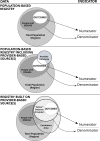Making Use of Comparable Health Data to Improve Quality of Care and Outcomes in Diabetes: The EUBIROD Review of Diabetes Registries and Data Sources in Europe
- PMID: 36994337
- PMCID: PMC10012140
- DOI: 10.3389/fcdhc.2021.744516
Making Use of Comparable Health Data to Improve Quality of Care and Outcomes in Diabetes: The EUBIROD Review of Diabetes Registries and Data Sources in Europe
Abstract
Background: Registries and data sources contain information that can be used on an ongoing basis to improve quality of care and outcomes of people with diabetes. As a specific task of the EU Bridge Health project, we carried out a survey of diabetes-related data sources in Europe.
Objectives: We aimed to report on the organization of different sources of diabetes information, including their governance, information infrastructure and dissemination strategies for quality control, service planning, public health, policy and research.
Methods: Survey using a structured questionnaire to collect targeted data from a network of collaborating institutions managing registries and data sources in 17 countries in the year 2017.
Results: The 18 data sources participating in the study were most frequently academic centres (44.4%), national (72.2%), targeting all types of diabetes (61.1%) covering no more than 10% of the target population (44.4%). Although population-based in over a quarter of cases (27.8%), sources relied predominantly on provider-based datasets (38.5%), fewer using administrative data (16.6%). Data collection was continuous in the majority of cases (61.1%), but 50% could not perform data linkage. Public reports were more frequent (72.2%) as well as quality reports (77.8%), but one third did not provide feedback to policy and only half published ten or more peer reviewed papers during the last 5 years.
Conclusions: The heterogeneous implementation of diabetes registries and data sources hampers the comparability of quality and outcomes across Europe. Best practices exist but need to be shared more effectively to accelerate progress and deliver equitable results for people with diabetes.
Keywords: diabetes; diabetes registries; health information; performance indicators; quality of care; risk adjustment.
Copyright © 2021 Carinci, Štotl, Cunningham, Poljicanin, Pristas, Traynor, Olympios, Scoutellas, Azzopardi, Doggen, Sandor, Adany, Løvaas, Jarosz-Chobot, Polanska, Pruna, de Lusignan, Monesi, Di Bartolo, Scheidt-Nave, Heidemann, Zucker, Maurina, Lepiksone, Rossing, Arffman, Keskimäki, Gudbjornsdottir, Di Iorio, Dupont, de Sabata, Klazinga and Benedetti.
Conflict of interest statement
SL is the Director of the RCGP RSC, as part of his academic work. He has received grants through his institution from AstraZeneca, Eli Lilly, Novo, and Sanofi, for diabetes related research. SC is employed by My Digital Health. CI is employed by Serectrix snc. SP was employed by Telemedica Consulting. The remaining authors declare that the research was conducted in the absence of any commercial or financial relationships that could be construed as a potential conflict of interest.
Figures




References
-
- Busse R, Klazinga N, Panteli D, Quentin W. Improving Healthcare Quality in Europe. Characteristics, Effectiveness and Implementation of Different Strategies (2019). World Health Organization and OECD. Available at: https://apps.who.int/iris/rest/bitstreams/1248308/retrieve (Accessed 6th July 2021). - PubMed
-
- Carinci F, Di Iorio CT, Massi Benedetti M. Standardized Information Exchange in Diabetes: Integrated Registries for Governance, Research and Clinical Practice, in Bruttomesso D, Grassi G (Eds), Technological Advancements in the Treatment of Type 1 Diabetes. Front Diabetes (2015) 24:236–49. doi: 10.1159/000363520 - DOI
Publication types
LinkOut - more resources
Full Text Sources
Research Materials

